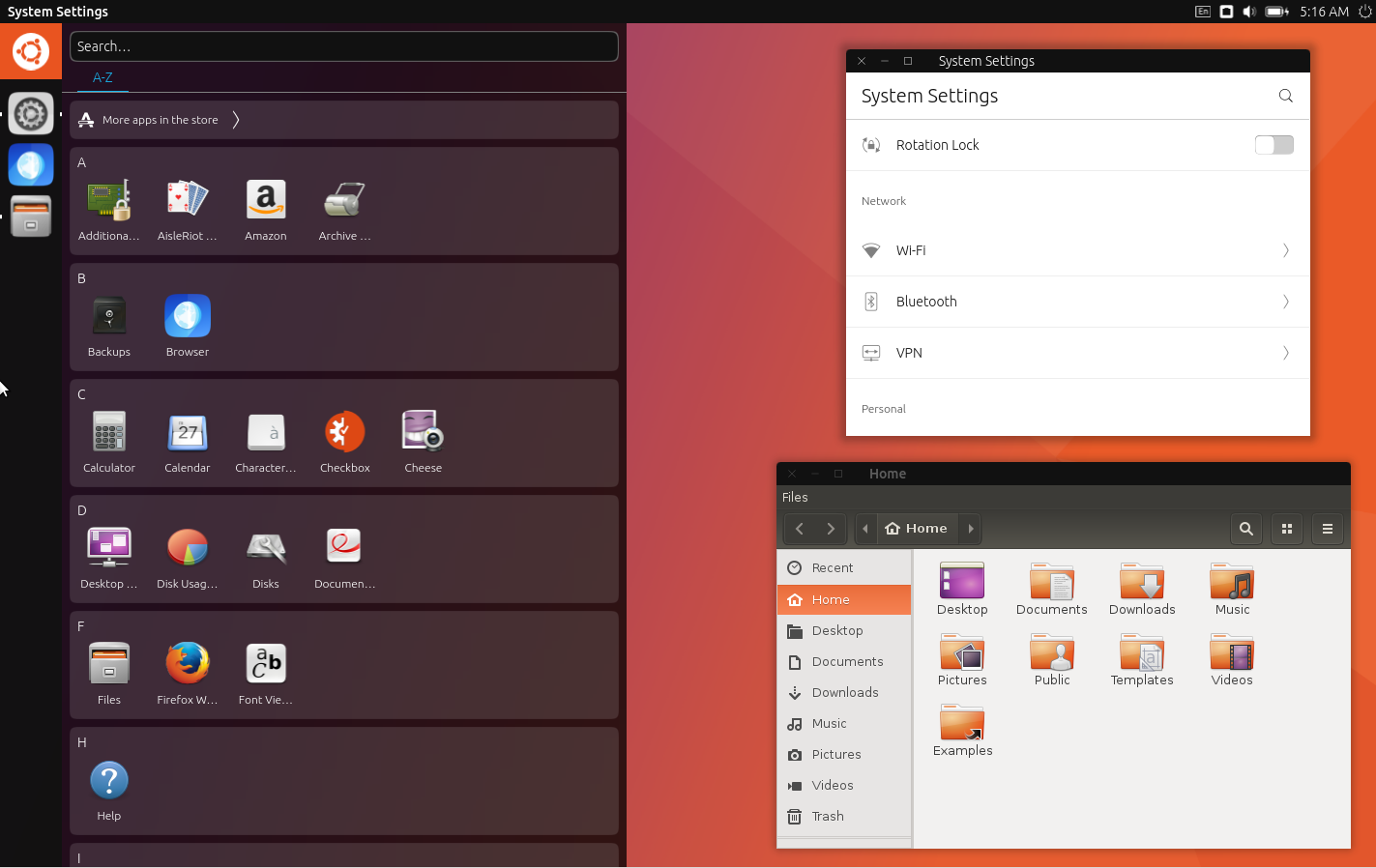Ubuntu 17 10 Install Unity
This tutorial shows you how to install Unity Desktop on Ubuntu 20.04 LTS. We will also restore the nice-looking Unity login screen, in case you don’t like the GNOME login screen. I personally don’t like GNOME. Here’s why.
- There’s too much movement when switching between programs, which is distracting.
- GNOME is trying to remove functionalities that I love to use over the years.
- If you insert a USB stick, the icon is shown on the desktop. You need to minimize your current window to access it. In Unity, I can simply click the USB icon in the left launcher bar. I can’t understand why the icons are shown on the desktop when there’s room in the left bar.
- In GNOME, a program’s menu bar isn’t displayed on the top bar, which wastes screen real estate.
- I prefer the window control buttons (minimize, maximize, close) on the left side of title bar because when you click one of three buttons, you are likely to switch to another program, which requires you to click on the left side of the screen.
- Sometimes I want to hide the clock on the top bar so as to focus on my task and not worry about time and deadline. It can be easily done in Unity but difficult to do in GNOME.
The latest version of the Ubuntu operating system for desktop PCs and laptops, Ubuntu 20.10 comes with nine months, until July 2021, of security and maintenance updates. Recommended system requirements are the same as for Ubuntu 20.04.1 LTS. Ubuntu 20.10 release notes.
GNOME becomes the default desktop environment since Ubuntu 17.10 with some Ubuntu-made modifications. But still, I can’t bring myself to like it. You may argue that users can install extensions to customize the desktop, but I’m not a person who would spend much time modifying appearance when there’s already one desktop environment I like out of the box.
Update: The GNOME desktop environment on Ubuntu 20.10 improved a lot in both appearance and functionality, and performance as well. I’m starting to switch to GNOME, because Unity DE won’t receive any update. Still, I don’t like the vanilla GNOME. You can install the GNOME Tweak tool (sudo apt install gnome-tweaks) to customize your desktop, like moving the titlebar button to the left and centering new windows.
- How to install Unity on Ubuntu (Optional): Open a terminal and run the following command if you would like to install Unity again on your system. Sudo apt install unity Once the installation completed, reboot your system and click on the gear icon at the login screen.
- It's normal that clicking on the Ubuntu button does nothing. The session to log in in GDM is now 'Ubuntu Desktop' For now, be sure to use Humanity or Humanity-Dark icon themes. Others will cause Unity 3.0 alpha to crash. Unity is available in Natty. Sudo apt-get install unity. Then restart Compiz or log out and log back into your.
- I know Ubuntu 17.10 has GNOME shell 3.26 entirely replacing Unity 8, and I also know at this point Ubuntu 17.10 hasn't been released, but I still asked here for people in the future that may get confused with the replacement of GNOME.
- Ubuntu 17.10 features the Linux kernel 4.13. Upgrading to Ubuntu 17.10 should be seamless from Ubuntu 16.04 LTS and 17.04. The swap is now a file, not a partition that will scale to what your system needs, making it easier to install Ubuntu on any machine. Ubuntu 17.10 Download Links.
How to Install Unity Desktop on Ubuntu 20.04 LTS
Open up a terminal window. Then run the following two commands to install Unity 7 desktop from the default software repository.
This will install a lot of packages. Hit Enter to continue.
During the installation, you will be asked to choose a display manager. You can choose lightdm display manager, which will give you the Unity Login screen. gdm is the default display manager for GNOME desktop.
Ubuntu Install Unity3d
Once the installation is complete, restart your Ubuntu 20.04 computer.
Now you are greeted by Unity login screen. What a warm feeling to have it back!
The default desktop environment is now Unity. You can click the Ubuntu icon to choose another desktop environment if you want to.
If your Ubuntu 20.04 system is upgraded from Ubuntu 19.10 or Ubuntu 18.04 and the login screen was replaced with the one from GNOME desktop, you can restore Unity login screen by running the following command.
And here’s the good old Unity desktop.
Checking Unity Version
You can use the screenfetch tool to check Unity desktop version.
As you can see, we have installed Unity 7.5.0.
You can also acquire Unity version by running the following command.

Since we installed Unity, why not install the Unity tweak tool?
How to Remove GNOME Desktop from Ubuntu 20.04

If you don’t want to keep GNOME on the list of available desktop environments, uninstall it with the following command.
Restart Ubuntu 20.04 OS, there will be no GNOME desktop in the login screen options.
Ubuntu 17 10 Install Unity Online
I hope this tutorial helped you install Unity 7 desktop on Ubuntu 20.04 LTS. As always, if you found this post useful, then subscribe to our free newsletter to get more tips and tricks. Take care 🙂